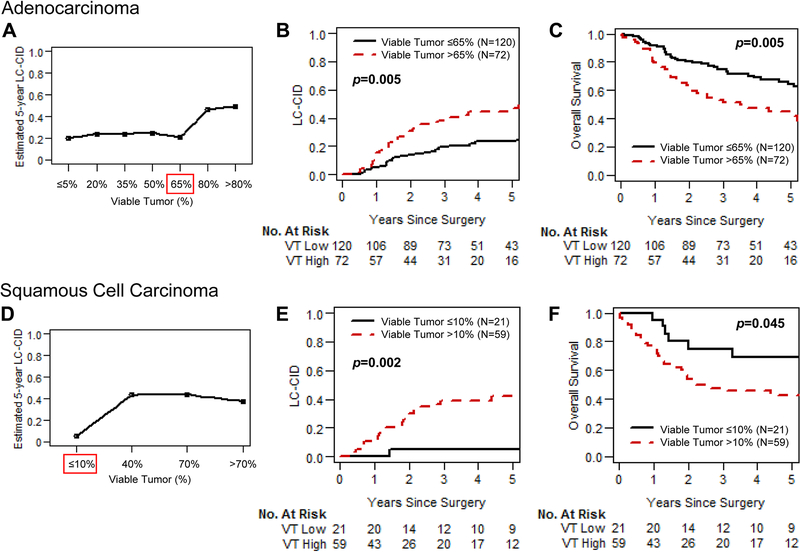Fig 3.
Association between percentage of viable tumor and prognosis for patients with adenocarcinoma (ADC) and squamous cell carcinoma (SCC). (A) Estimated 5-year lung cancer–specific cumulative incidence of death (LC-CID) by percentage of viable tumor for patients with ADC is shown. The Y-axis represents seven groups of patients on the basis of percentage of viable tumor: ≤5% (n=13; 0%−5%), 20% (n=24; 6%−20%), 35% (n=23; 21%−35%), 50% (n=35; 36%−50%), 65% (n=25; 51%−65%), 80% (n=52; 66%−80%), and >80% (n=20; 81%−100%). (B) LC-CID for patients with ADC with high (>65%) and low (≤65%) viable tumor is shown. Patients with high viable tumor had significantly worse LC-CID than those with low viable tumor. (C) Overall survival for patients with ADC with high (>65%) and low (≤65%) viable tumor is shown. Patients with high viable tumor had significantly worse OS than those with low viable tumor. (D) Estimated 5-year LC-CID by percentage of viable tumor for patients with SCC is shown. The Y-axis represents four groups of patients on the basis of percentage of viable tumor: ≤10% (n=21; 0%−10%), 40% (n=21; 11%−40%), 70% (n=21; 41%−70%), and >70% (n=17; 71%−100%). (E) LC-CID for patients with SCC with high (>10%) and low (≤10%) viable tumor is shown. Patients with high viable tumor had significantly worse LC-CID than those with low viable tumor. (F) Overall survival for patients with SCC with high (>10%) and low (≤10%) viable tumor is shown. Patients with high viable tumor has significantly worse OS than those with low viable tumor.

